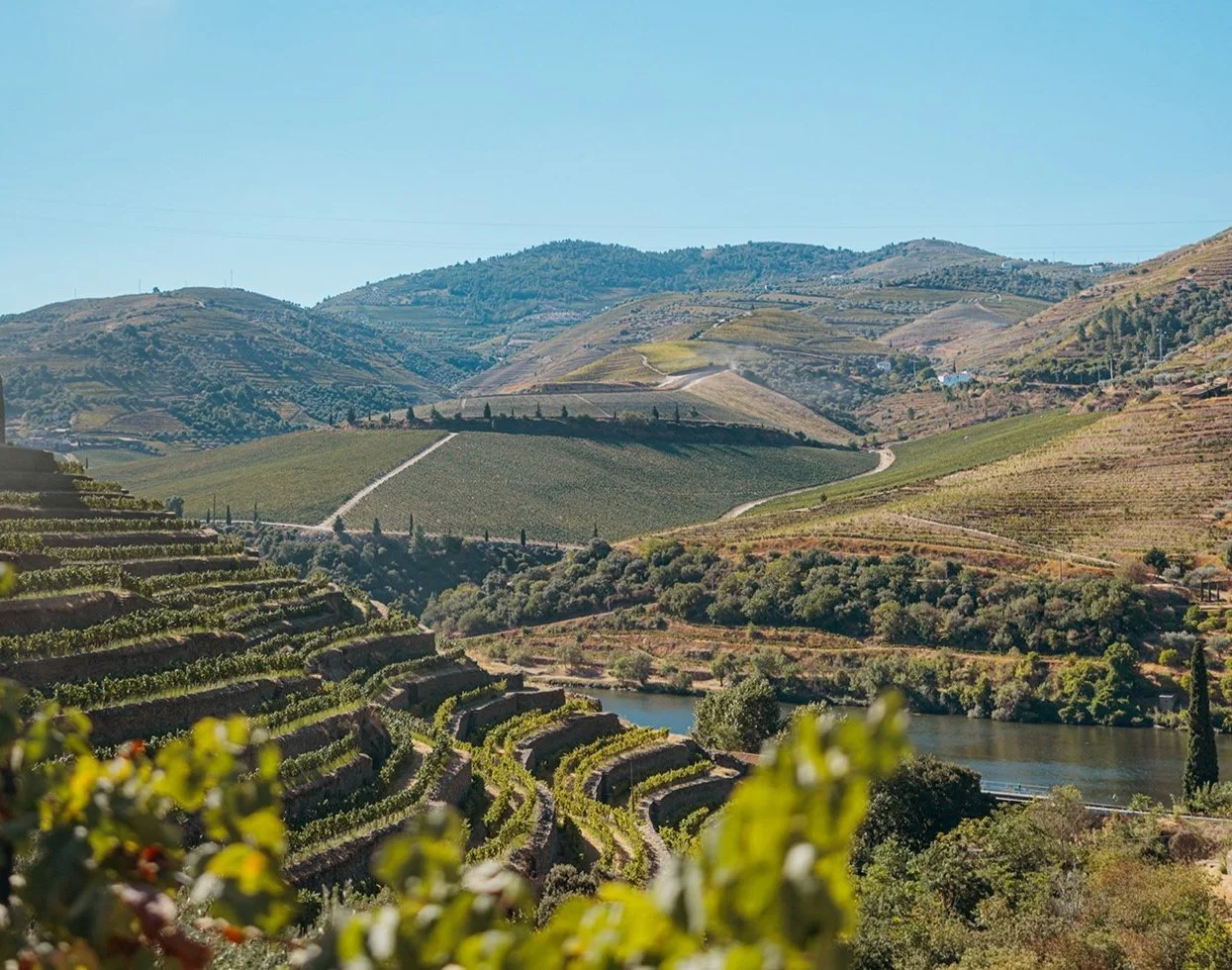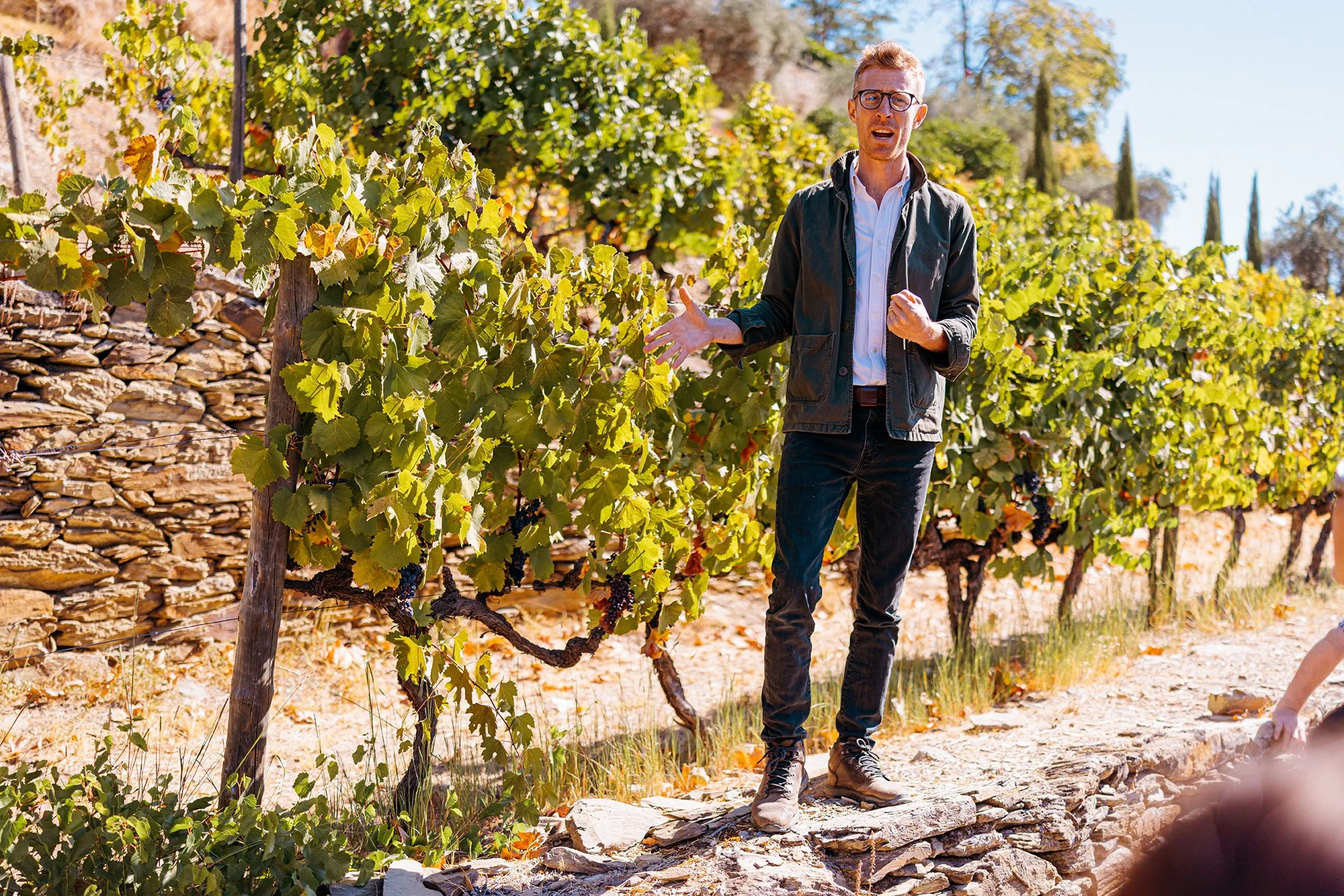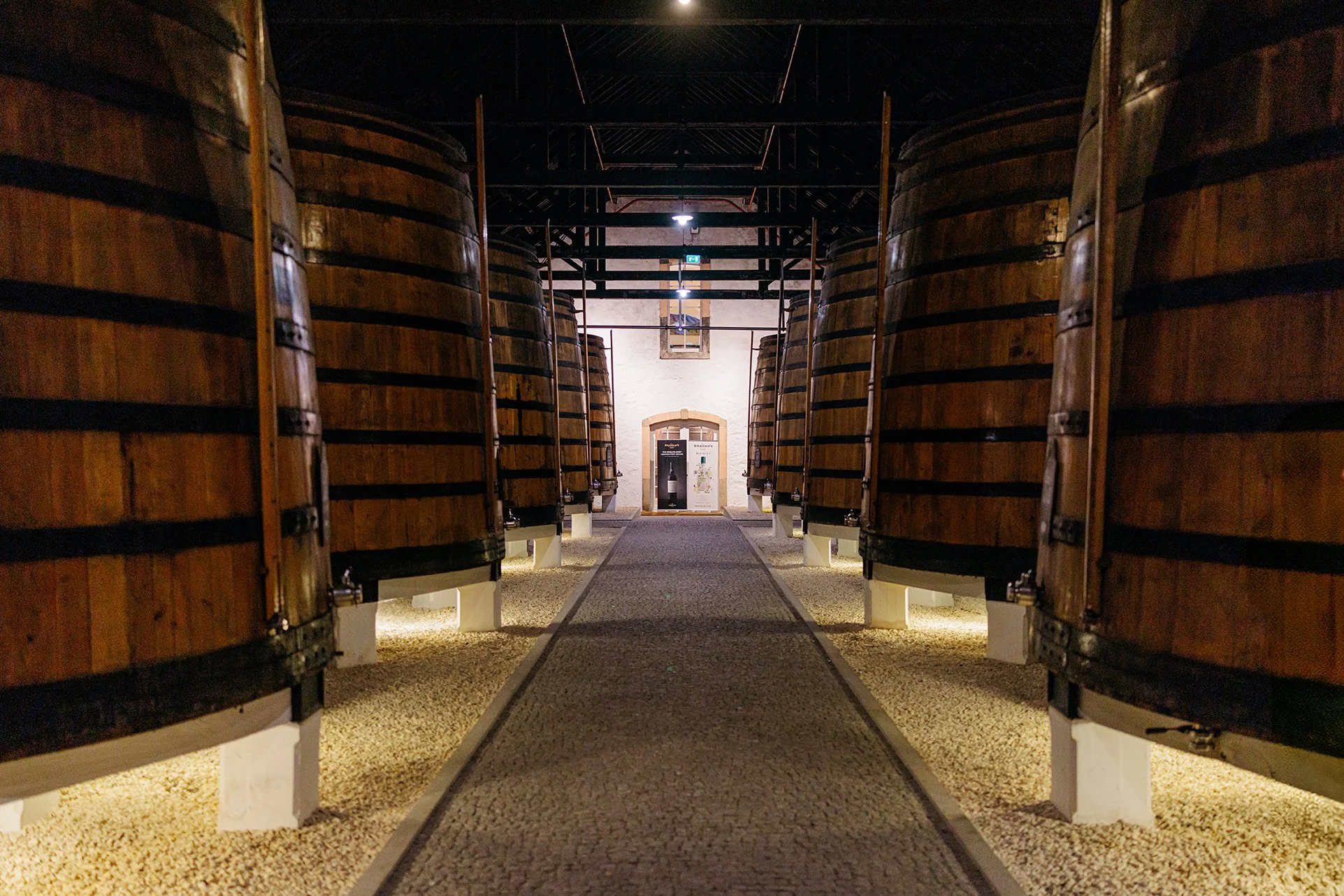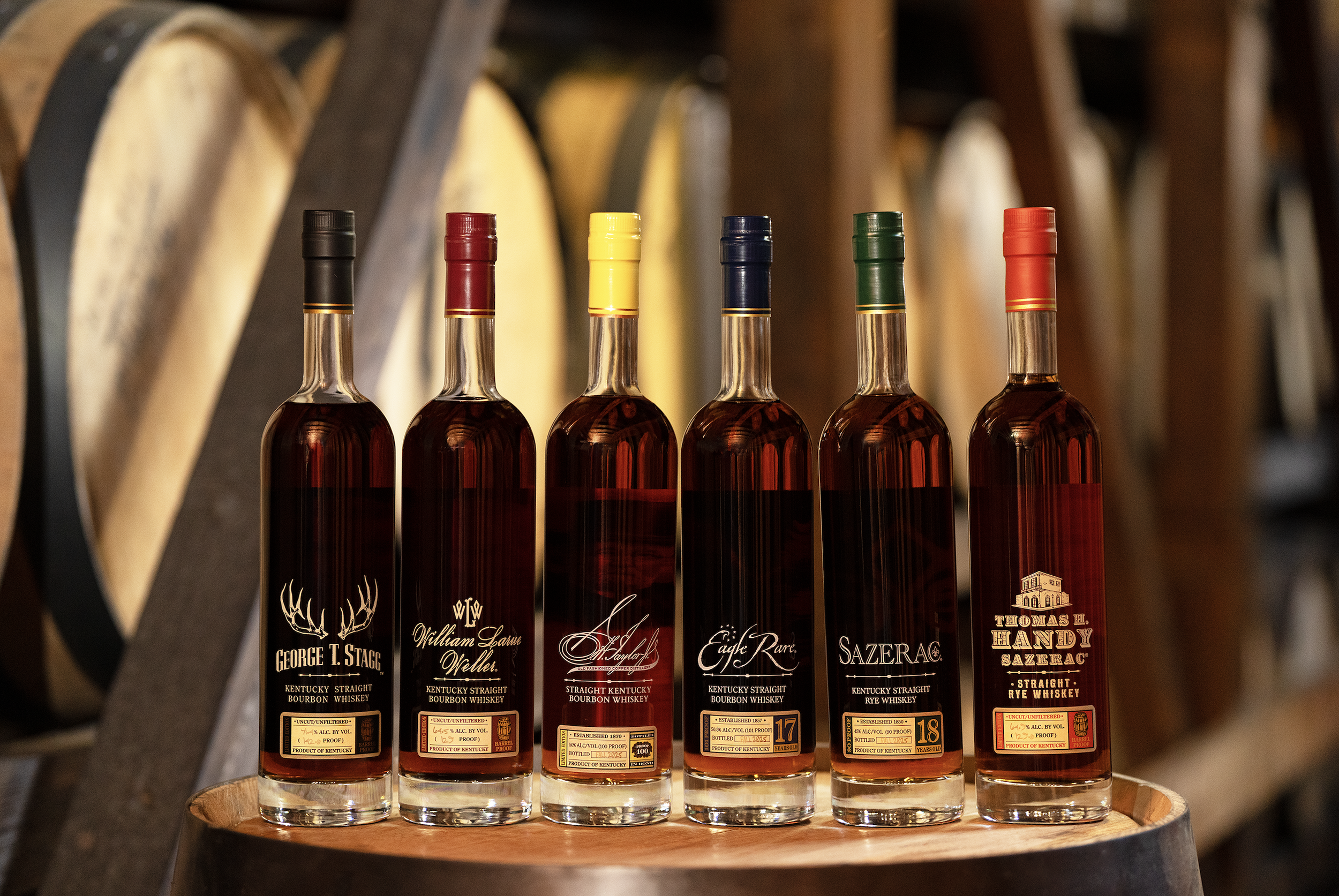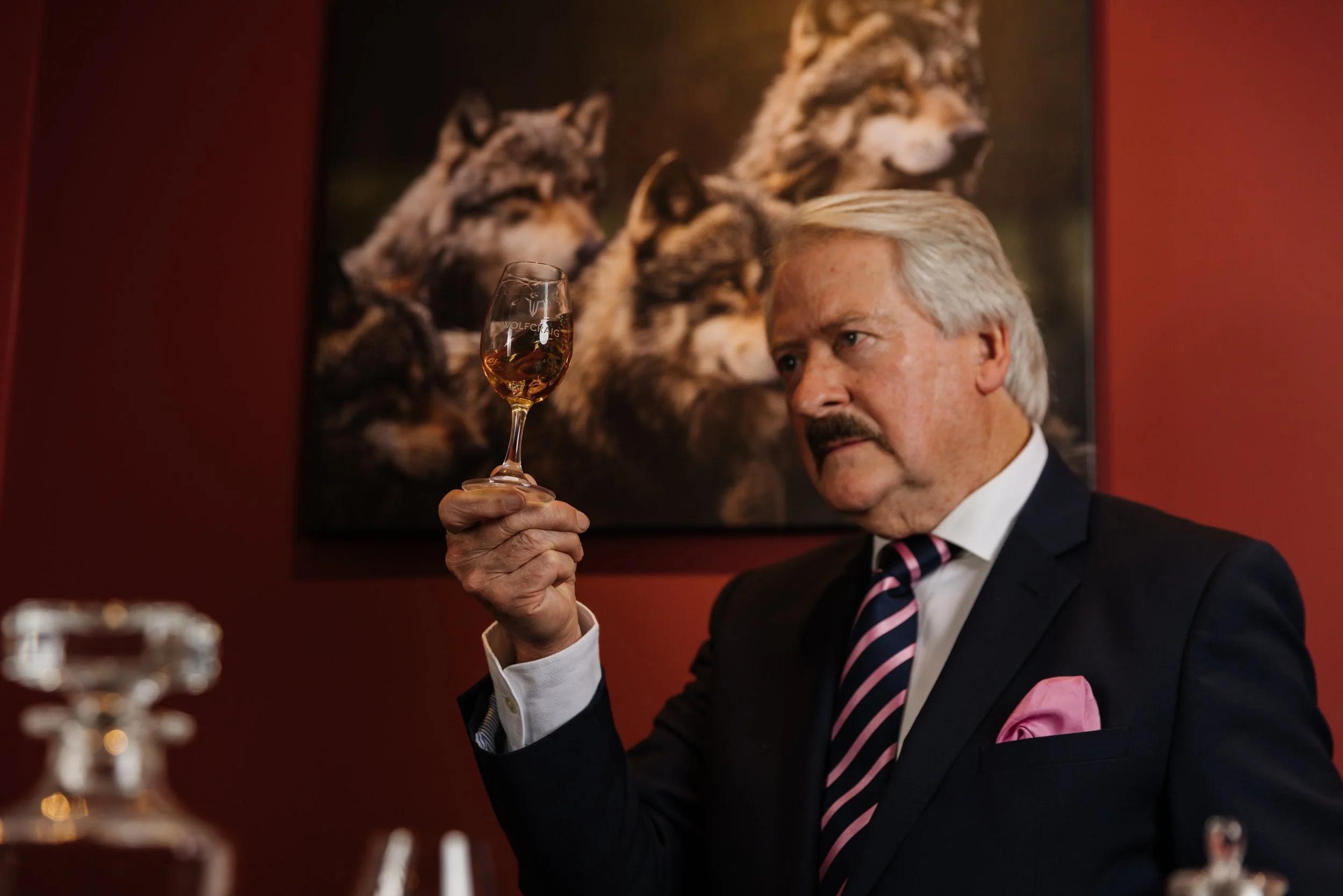A vine romance: Whisky and Port’s joyful union
Vineyards stretch on forever from Quinta Dos Malvedos in Portugal's Douro valley
The Dalmore’s epic new Port Edition is forged in Scotland and finessed in the feted Douro valley wine region. For Anna Lou Larkin, a Glaswegian with a Portuguese grandfather, this was a magical marriage too good to resist. Photographs by Till Britz
There is an old Portuguese superstition which says that rain on your wedding day is the luckiest portent imaginable. It’s my favourite thing I’ve taken from my Portuguese grandfather – along with breakfast cake and drinking red wine with fish – not least as I decided to get married on a January day in Glasgow.
If a smattering of rain is lucky, then the gentle deluge of ash from the Douro Valley wildfires as we gather in Porto to celebrate the cask partnership of The Dalmore and Graham’s Port, is surely auspicious as all holy hell. And there is nothing like a reminder of our own inevitable extinction to up the ante at any party.
Meet the mellow fellow transforming the future of Japanese craft whisky
The Dalmore Cask Curation Series Port Edition is the second chapter of a series of releases honouring the unique relationship between the people who make whisky and the people whose casks help shape its flavour. The fruity-textured Port cask influence is a particular favourite of mine and from a smoky roof terrace in the city of Gaia where we gather on our first night in Portugal, I am tingling with anticipation.
As with any festivity rooted in tradition, it is impossible to ignore the humming tension between the old and the new. Our hosts, the Symington Family, owners of Graham’s Port, neatly encapsulate both. The family’s legacy began with Andrew John Symington, a Glaswegian who arrived in Portugal in 1882 and married Beatrice Leitao de Carvalhosa Atkinson, a descendant of the 17th-century Port merchants. Now, the fifth generation of Symingtons can trace their lineage in the trade fourteen generations back to 1652.
Rob Symington, CMO of Graham's Port, at the Quinta Dos Malvedos vineyards
On our first morning we meandered upriver to Quinta Dos Malvedos, the family estate and spiritual home of the brand, to meet the current CMO, Rob Symington. Despite the size of the job and the weight of history and forebears on his shoulders, he is genial and relaxed, talking with an energy which doesn’t flag.
“People asked me did you feel pressure and responsibility to come into the family business and yes there was all that stuff, but look around you. I’d have to be insane to turn my back on this.” Watching the insistent blue of the Douro carve out the bright green valley, it is easy to see what he means.
In 2019 Rob led the team responsible for Symington Estates gaining B Corp certification, a rigorous process where a company must prove its commitment to environmental and social sustainability and accountability. They are now working towards zero carbon emissions, hence their fidelity to Douro grape growers for their ports.
‘Red wine casks have been lending their own accent to whisky for generations. There is an approachability, but one that doesn’t sacrifice complexity or elegance’
“We buy almost 20 percent of the region’s grapes,” says Rob. “Those growers’ grandparents were selling grapes to my grandparents. We know we can’t have a healthy future if the communities that we rely on to produce our port don’t have a healthy future themselves.”
As I effortlessly mangle the pronunciation of Quinta Dos Malvedos, Rob kindly concedes that “the Scottish accent and Portuguese can actually work quite well.” I think this bodes nicely for the whisky.
Red wine casks have been lending their own accent to whisky for generations, probably as early as the 15th century. This influence can be sweetness, spice, red fruits, and a luscious texture. There is an approachability, but one that doesn’t sacrifice complexity or elegance. With all that spicy goodness being breathed into your spirit, it is no surprise that whisky makers want to find casks that have once held remarkable wines.
Quiet and sacred: towering chestnut balseiros in the warehouse at Graham's Port Lodge
Workers are carefully sorting grapes as we arrive at the Quinta Dos Malvedos winery. It’s evident everyone here is passionate about producing something exceptional. Winemaker Bernardo has been with the company for 10 years and he and Rob show us the traditional granite lagares designed for foot treading the grapes as well as the automated versions which replaced them. I am glad to hear the parties that traditionally mark the end of the process still take place today and regret not bringing my accordion along.
People matter here and so does incredible wine. The partnership with the Dalmore makes perfect sense with that shared ethos of individuals, place and flavour.
From Malvedos we travel by boat to the estate’s modern restaurant at Quinta do Bomfim. There is no better way to feel the green sweep of the Douro Valley — a 600km expanse of lush vineyards and narrow stone terraces, the oldest demarcated wine region in the world — or to get an idea of the preposterous job of growing grapes on such an inhospitable incline.
Of course, a boat is good and a boat with white ports and tonic on board is better. Lunch is as elegant as it comes. Bacalhau, the traditional Portuguese salt cod stew, has definitely upped its game since the affectionately named and universally rejected “buckle-yuk” of my childhood. I’m not going to bang on about the wine, but it was excellent. Top marks to the Prats and Symington Chryseia, Touriga Franca and Touriga Nacional at their ripe and structured best.
A fiery sun sets over the horizon on the river Douro from Gaia, with Porto on the other side
From a breezy lunch to dinner at the Factory House, the historic port shippers club on Rua do Infante, dating back to 1790. If Rob appears to have his nose in the future, the Factory House is keeping two great big brogues planted firmly in the past. The club occupies the sort of grand Neo-Palladian building traditionally witness to many fine dinners and a fair few questionable decisions and now has only seven members. They are very pleased we have dressed up.
The Factory House feels like many other British institutions I have had the dubious honour to spend time in. Complete with portraits of the company men who ruled the roost and a toast to the King of England, the British roots of the Port trade are not playing hide and seek here. But there is something else going on too, something unmistakably Portuguese. Maybe that British nostalgia has been wrapped up with the wonderfully untranslatable Portuguese saudade, that intangible longing or yearning, making it all a bit more palatable. Or maybe I’m just feeling the effects of the stunning 2003 vintage.
‘The Dalmore King Alexander III is a model example of what a wine cask can do, this is a whisky where the careful composition of casks creates the perfect balance of sweetness and spice’
The thing is, you can’t truly separate Port from this curiously British Old Boys Club. And I’m not sure you’d want to.
The custom of retiring after dinner to sit at an identical table at exactly the same seat, but in an adjoining candlelit room free of the smells and tensions of the dinner table, is one of the occasions where tradition excels. And it’s the perfect setting for a cheeky reminder of the grown-up fruit and spiced richness of the Dalmore King Alexander III. A model example of what a wine cask can do, this is a whisky where the careful composition of casks creates the perfect balance of sweetness and spice, with that sumptuous mouthfeel I always associate with wine cask maturation. The selection of differently aged malts are matured in six different casks: French wine, Madeira, Sherry, Marsala, Port and Bourbon. It is truly assured blending and a proper treat.
We spend an evening at the iconic Graham’s Lodge where we taste three Single Harvest Tawny Ports in the most formal tasting setting yet. The 1994 and the 1997 are superb, ten out of ten. I would highly recommend. Don’t ask for the 1952, it’s all gone, we drank it. Our guide Nuno is thrilled to taste this one, the last bottle left in existence, and it really is a resinous treat whose antiquity and incense remind me instantly of being in church.
It is easy to be swept up in the awe and reverence of it all. Even for those accustomed to the weirdly sacred quiet of a cask house, dining amongst the glorious chestnut balseiros at Graham’s Port Lodge is special. I’m not saying I cried when the newly-released 50 Year Graham’s Tawny came out, but I certainly cried when I tasted it. Thank goodness for Mags.
‘We tasted the last bottle in existence of the 1952 Tawny Port, it’s a resinous treat whose antiquity and incense remind me instantly of being in church’
Mags, aka Margaret Nicol, The Dalmore’s blend controller, is celebrating 50 years in the industry and is guest of honour in Porto. I’d heard that she is humble, direct and very happy to be a back of house person. “I think that makes people want to talk to you even more,” she tells me. And I get it. We hear enough from performers. She is indeed humble but not meek and has a wit that reminds me of characters from my childhood in Glasgow. You don’t treat her with phony deference, just genuine respect for someone who is excellent at their job. As Kieran Healey-Ryder of The Dalmore reminds us, “She tells me quite firmly when I’ve done something wrong.” I don’t doubt it. She mentions over cocktails that she doesn’t like coriander or Nutella. I’d happily wear coriander as a perfume and eat Nutella with a spoon, so we’re lucky things didn’t end in a scrap.
Better get this whisky out then. I’m obsessed with the teal green carry case of the Port Edition, a playful nod to the green livery of Graham’s. The three whiskies inside, a 27 Year Old, a 30 Year Old and a 43 Year Old have been finished in the 1997, 1994 and 1952 Single Harvest Tawny casks respectively. Of course they have.
The teal green carry case of the Port Edition is a playful nod to the green livery of Graham’s Port
If tasting the port was like being in church, tasting the whisky is like climbing into the church organ and having a fling with the choirmaster. The texture is luxurious, particularly in the 30 Year Old, and the blood orange overtones as persistent as the blood red sun in the smoky skies over the city. The connection between the whisky and the winemaking is conspicuous and, as Rob points out, they don’t want to give their barrels away.
“Unlike red wine producers, we want our casks. Because the best Tawnies are aged in seasoned oak and until the thing falls apart, we want to keep it. So, it requires a very special friend and partner for us to let them go.”
I guess nothing says “I love you” quite like some really knackered old barrels. And these guys are definitely BFFs. Lucky for us whisky drinkers because the result of this marriage is sheer class.
‘If tasting the port was like being in church, tasting the whisky is like climbing into the church organ and having a fling with the choirmaster’
For me these whiskies all enjoy the warm wood spice and abundant fruit from the Graham’s casks and as each of the Single Harvest Tawny Ports has its unique flavour, each of the three whiskies also offers something different. I am enticed by the elegance of the 43, the generosity of the 30 and the immediacy of the 27 Year Old. The Dalmore Cask Curation Series II Port Edition is a very rare treat indeed and limited to 150 sets.
The Fado music that floats across the terrace of Graham’s Lodge is more celebratory than the wallowing I remember from my grandpa’s tiny cassette player. But still from the heart. Or rather, the gut. And still rooted in a sense of longing, just maybe for the future this time. Because a wedding isn’t the end of the story or even the beginning. It simply celebrates the continuation of meaningful, deep partnership. And there is partnership here. The Scottish accent is certainly intune with the Portuguese at The Dalmore.
Find out more about the Dalmore Cask Curation Series II Port Edition
27 Year Old 1997 cask finish
Honey, almonds, red berries, toast, sweet spice
30 Year Old 1994 cask finish
Blood orange, chocolate, silk, vanilla, maple syrup
43 Year Old 1952 cask finish
Antique leather, Plums, tobacco, ginger, resinous, baked cherries

